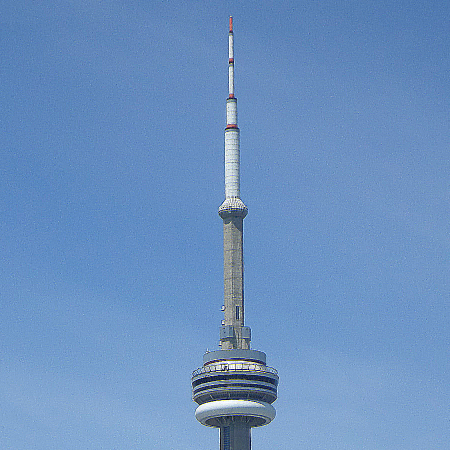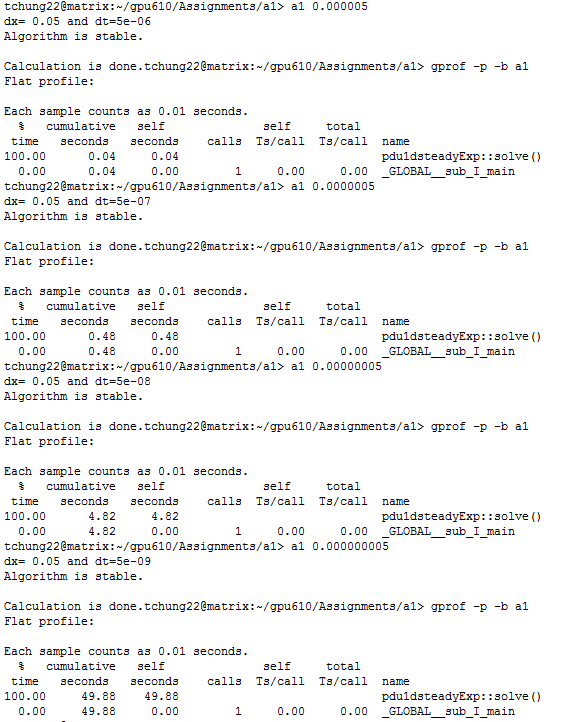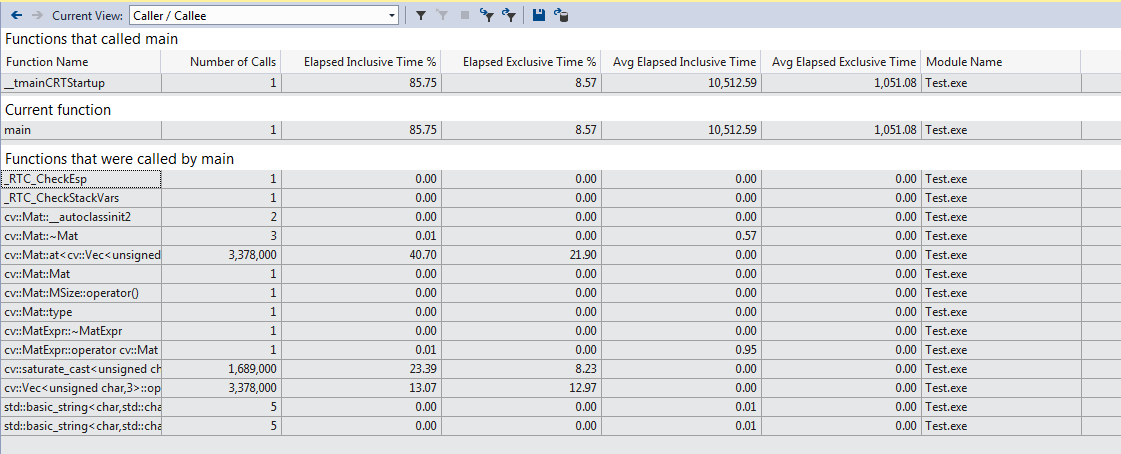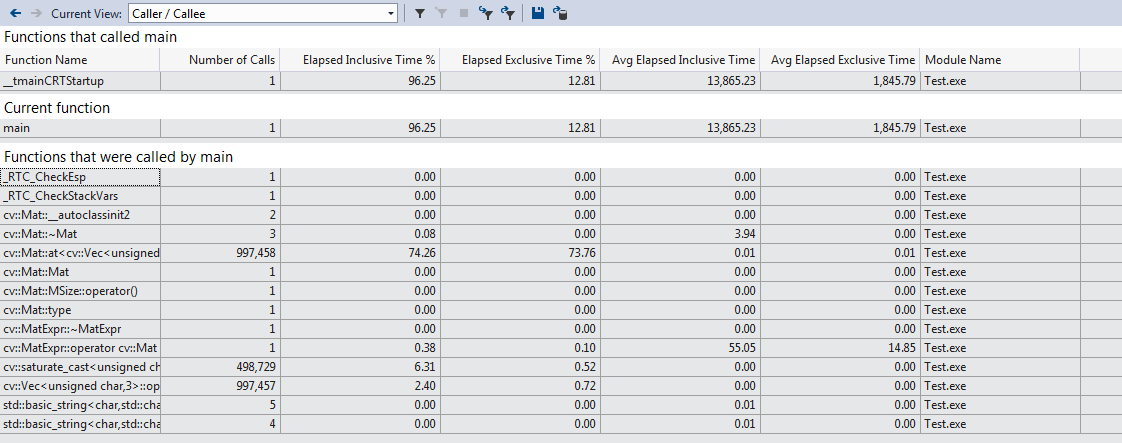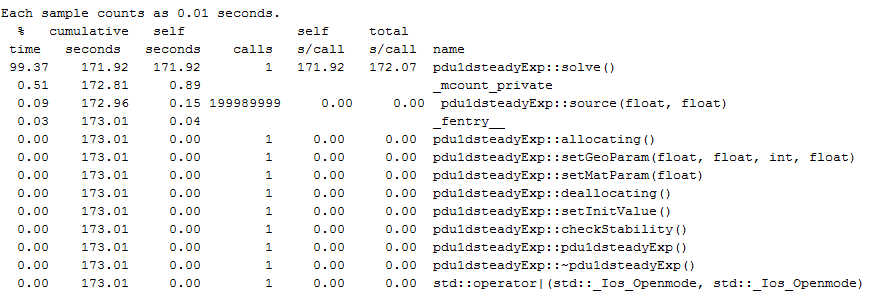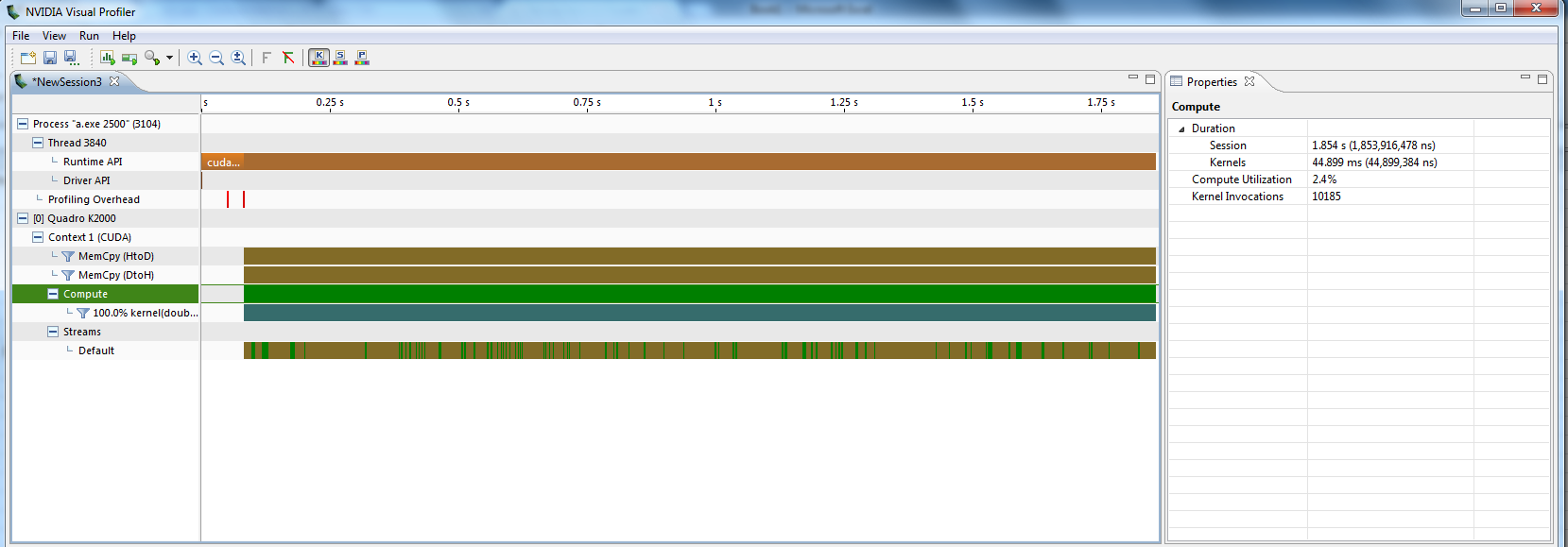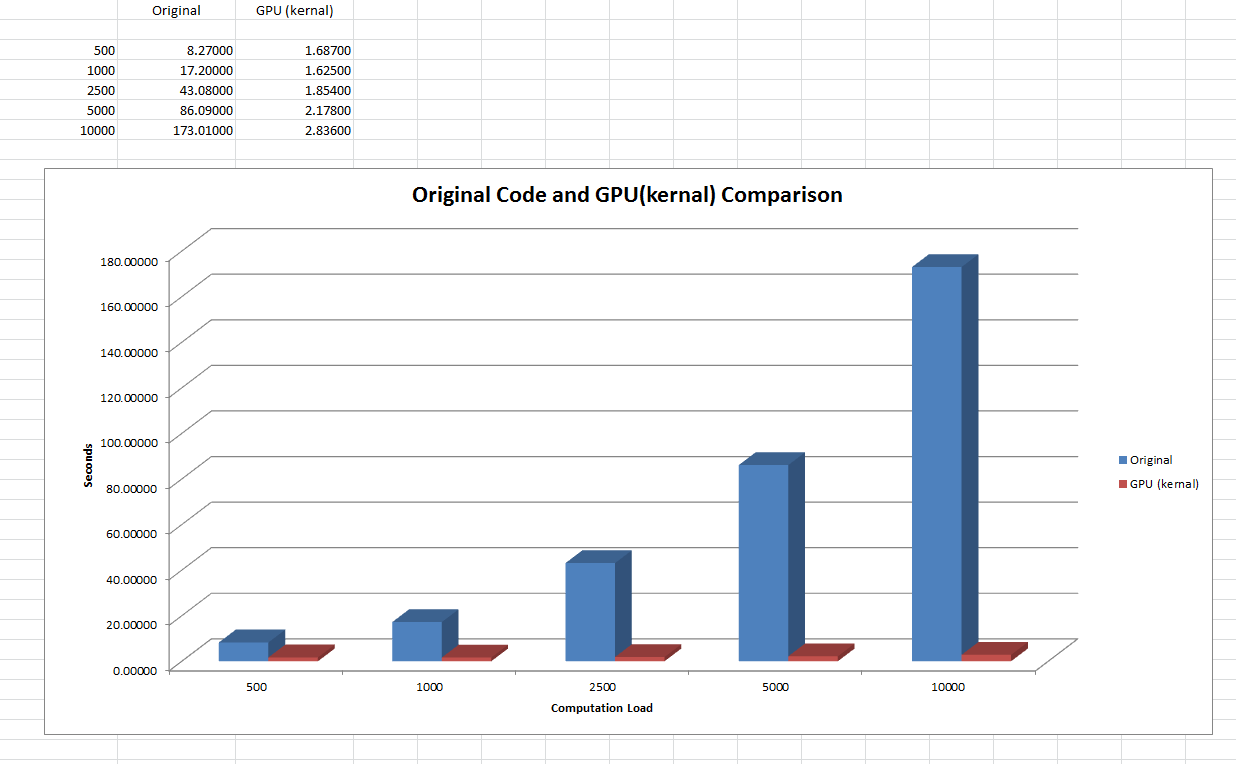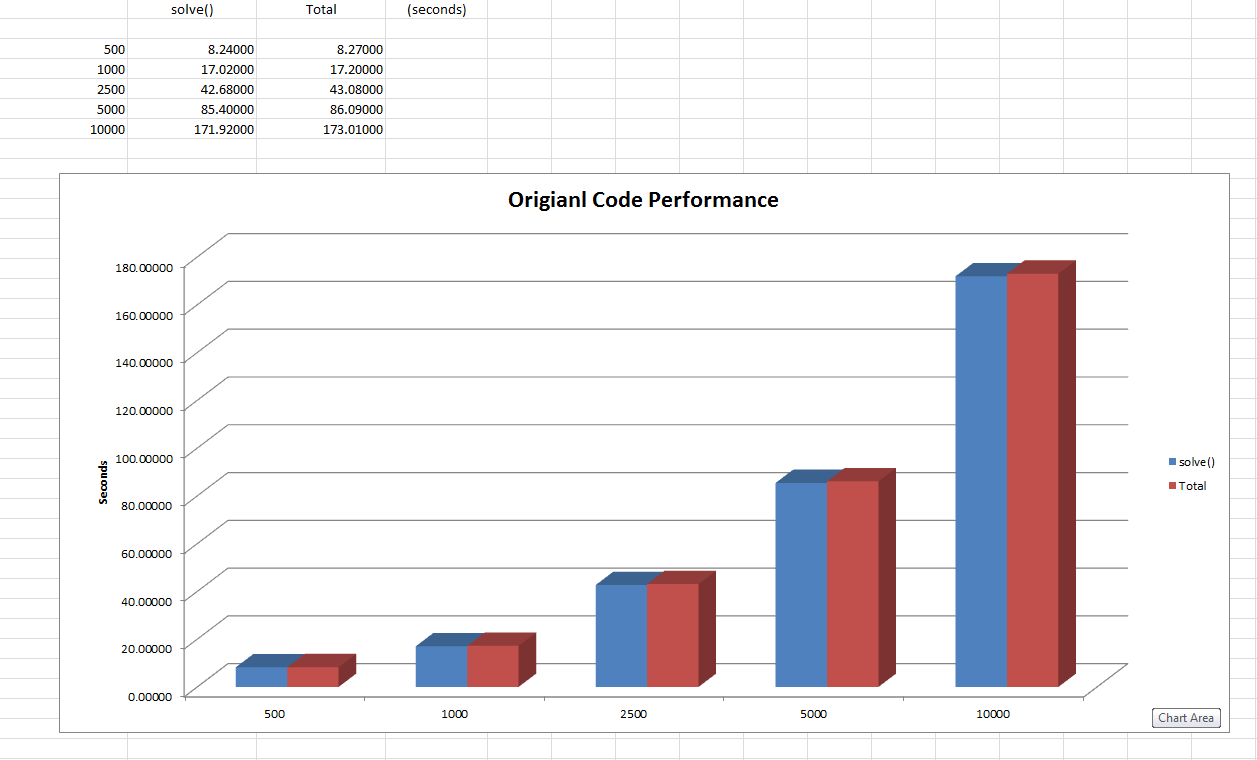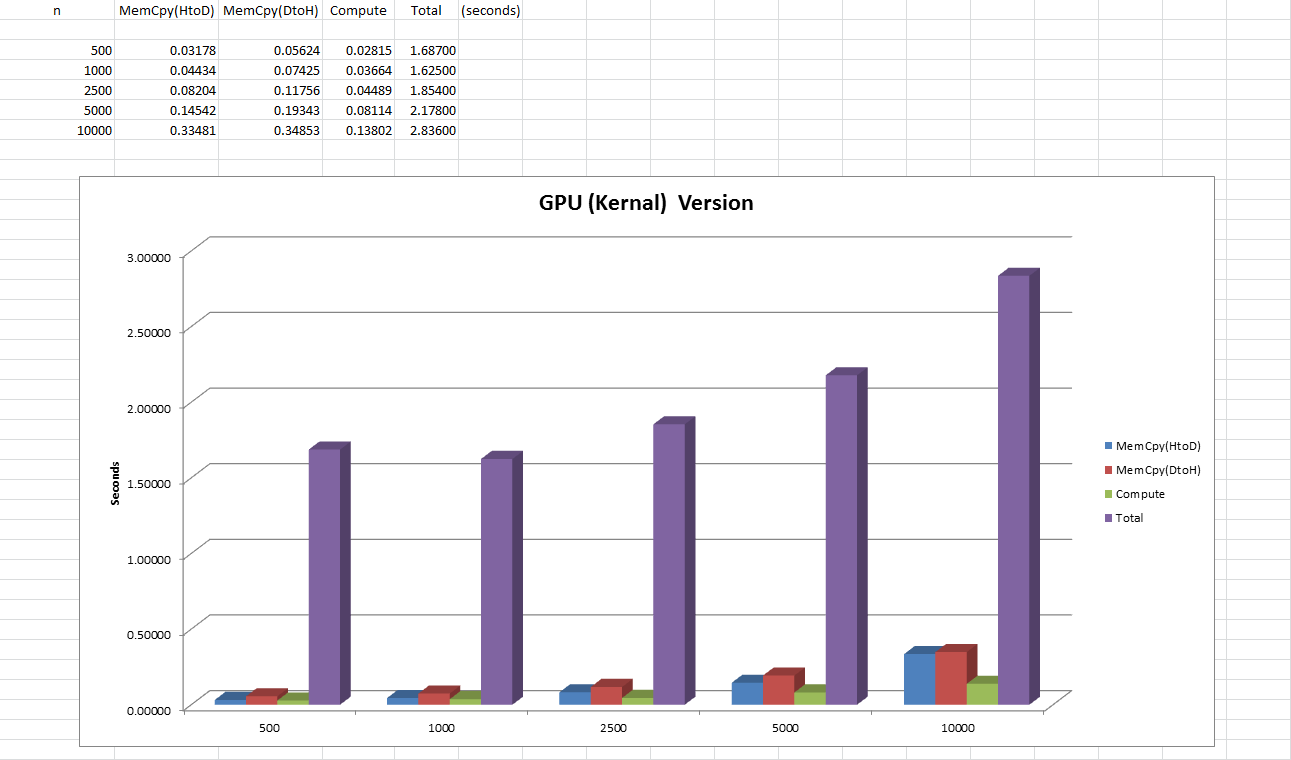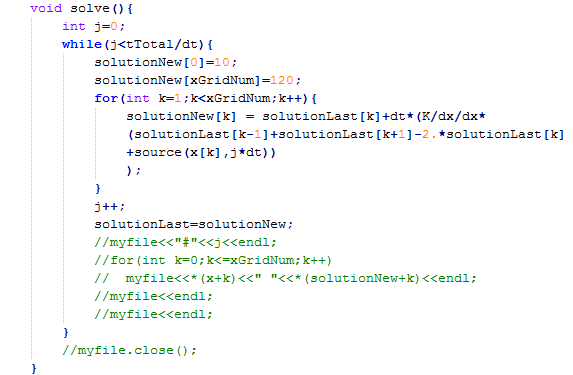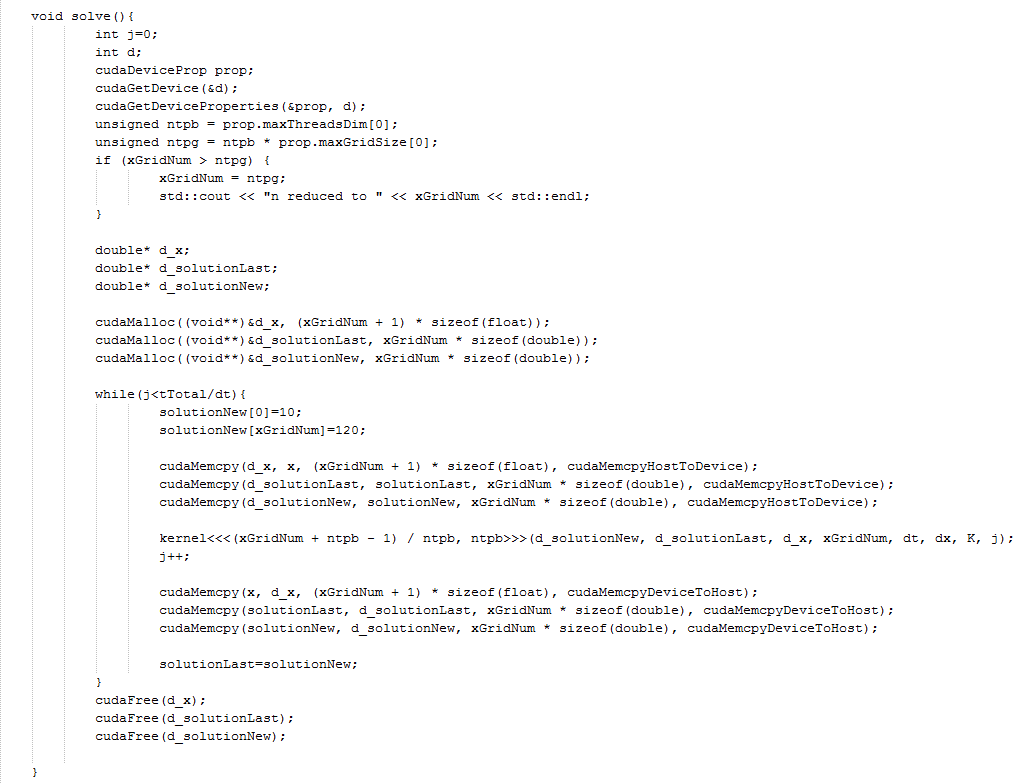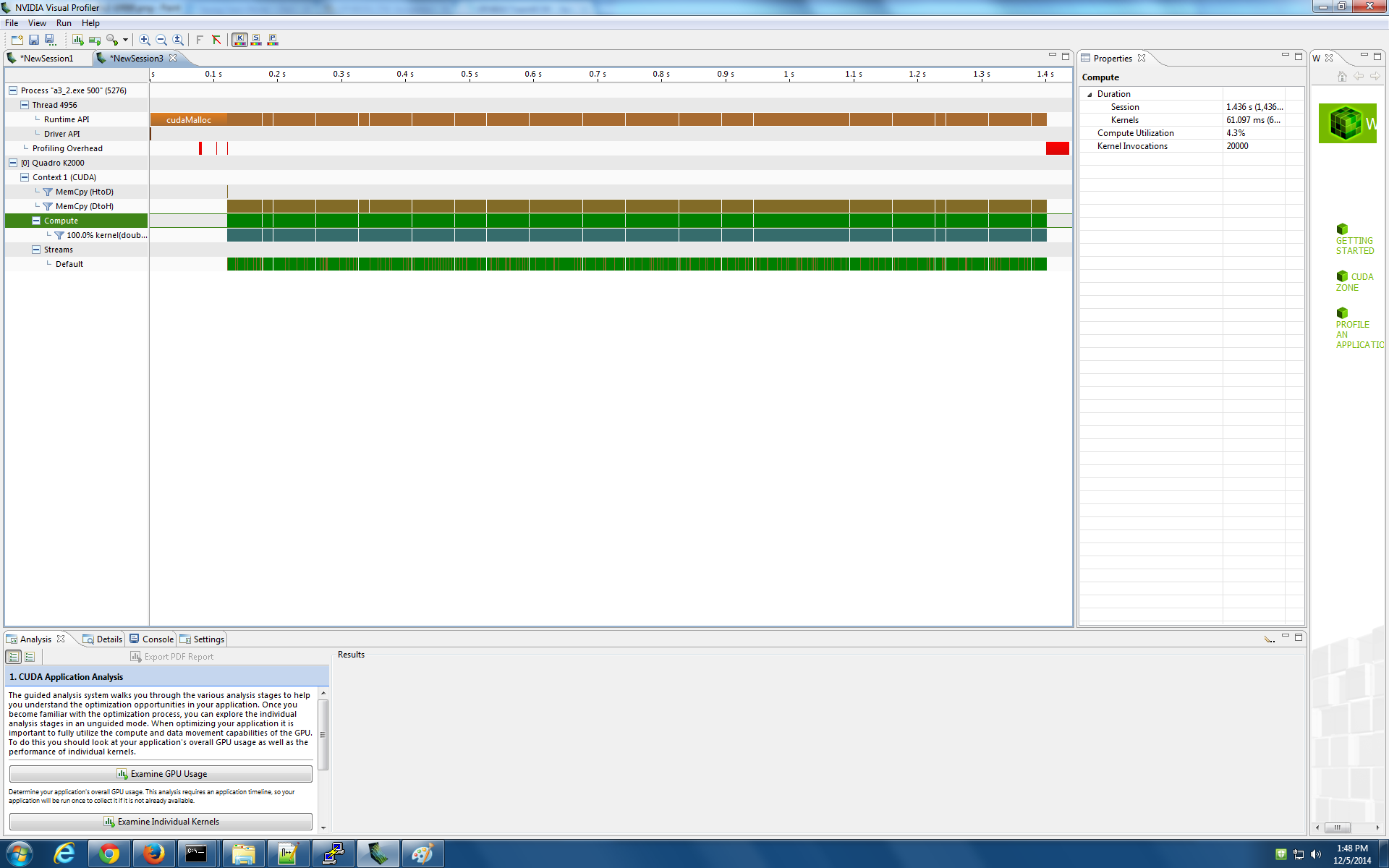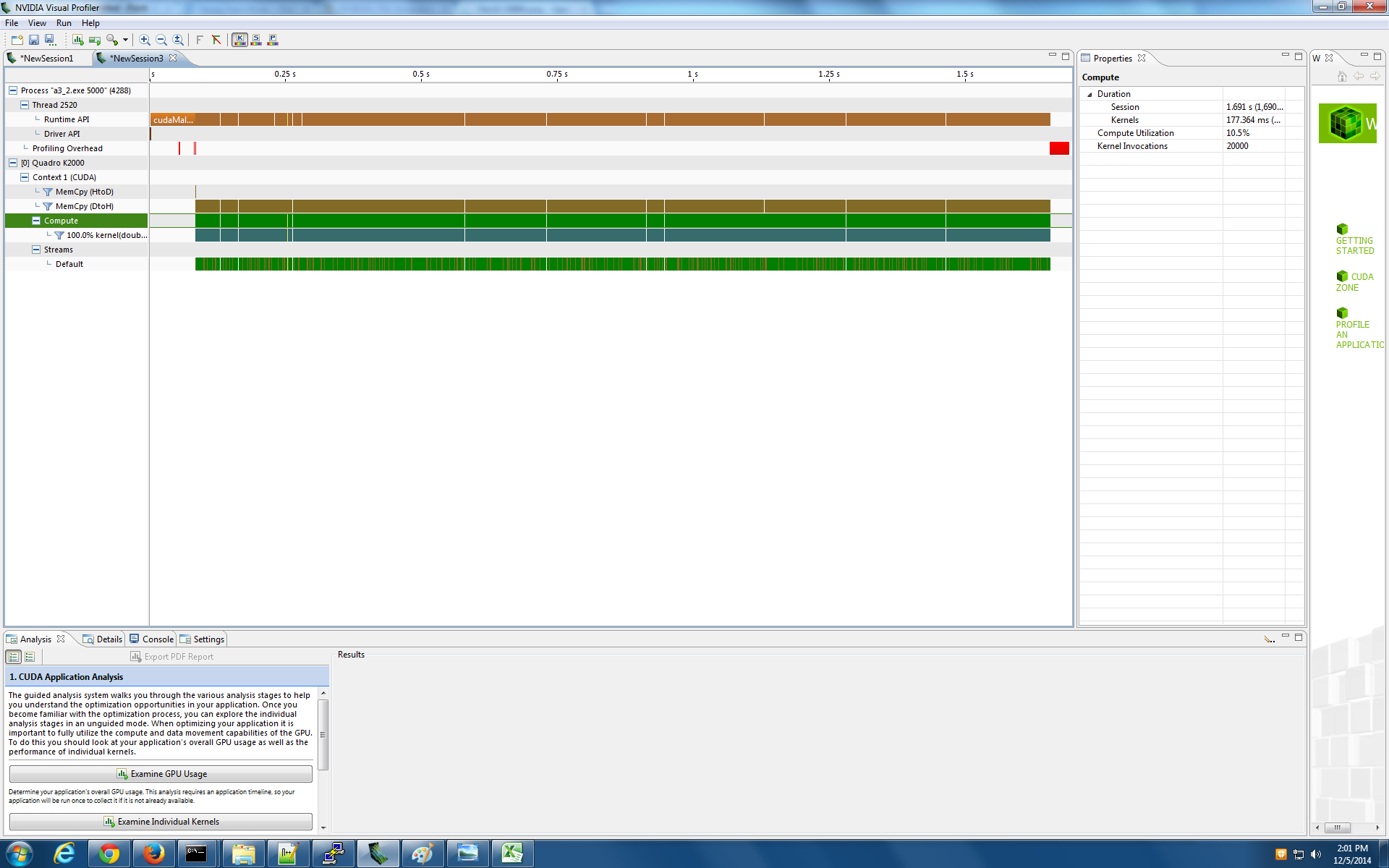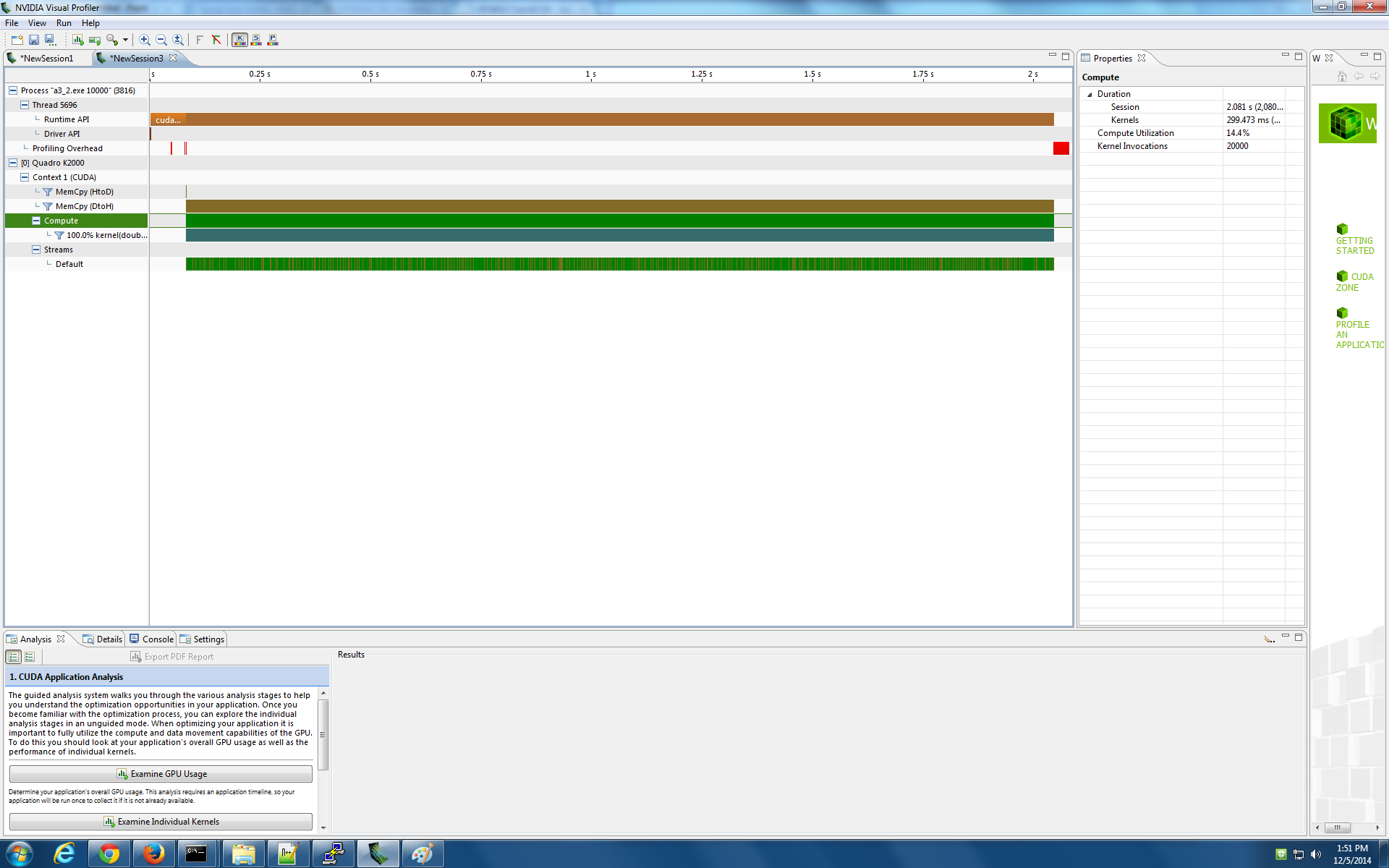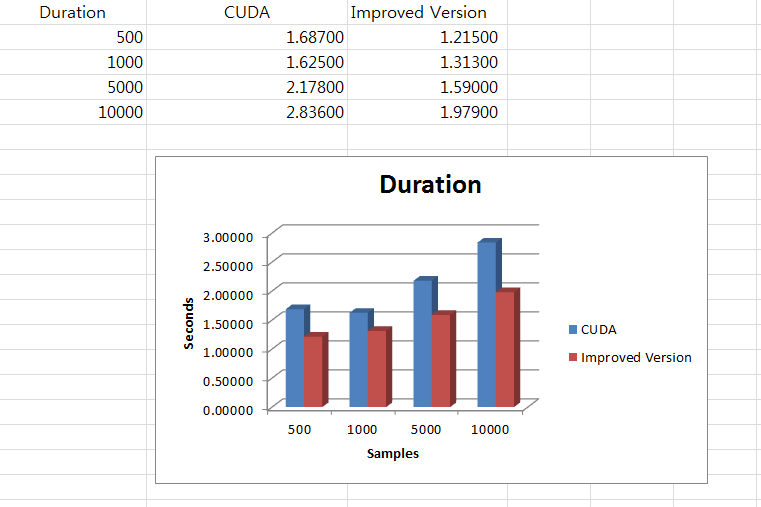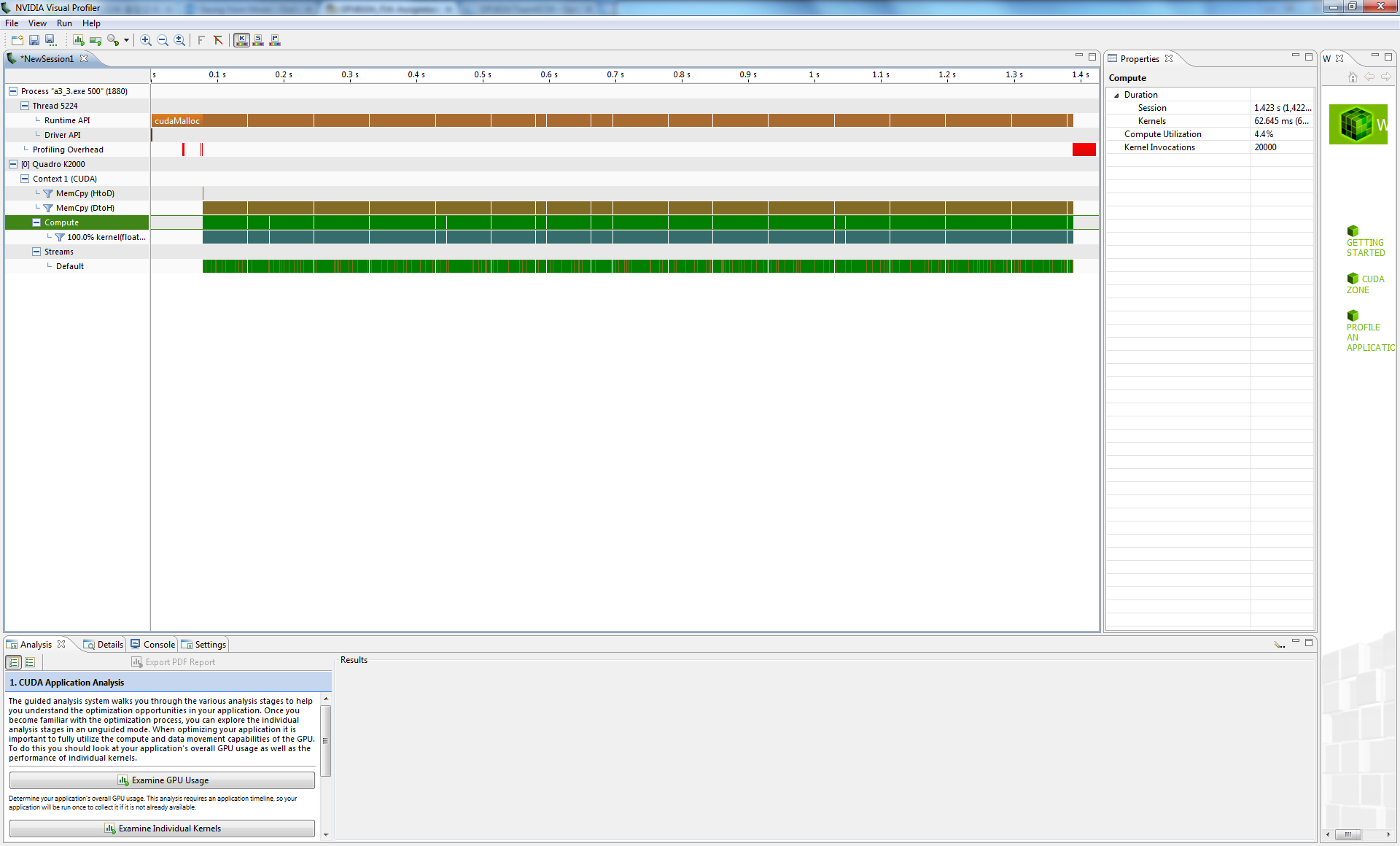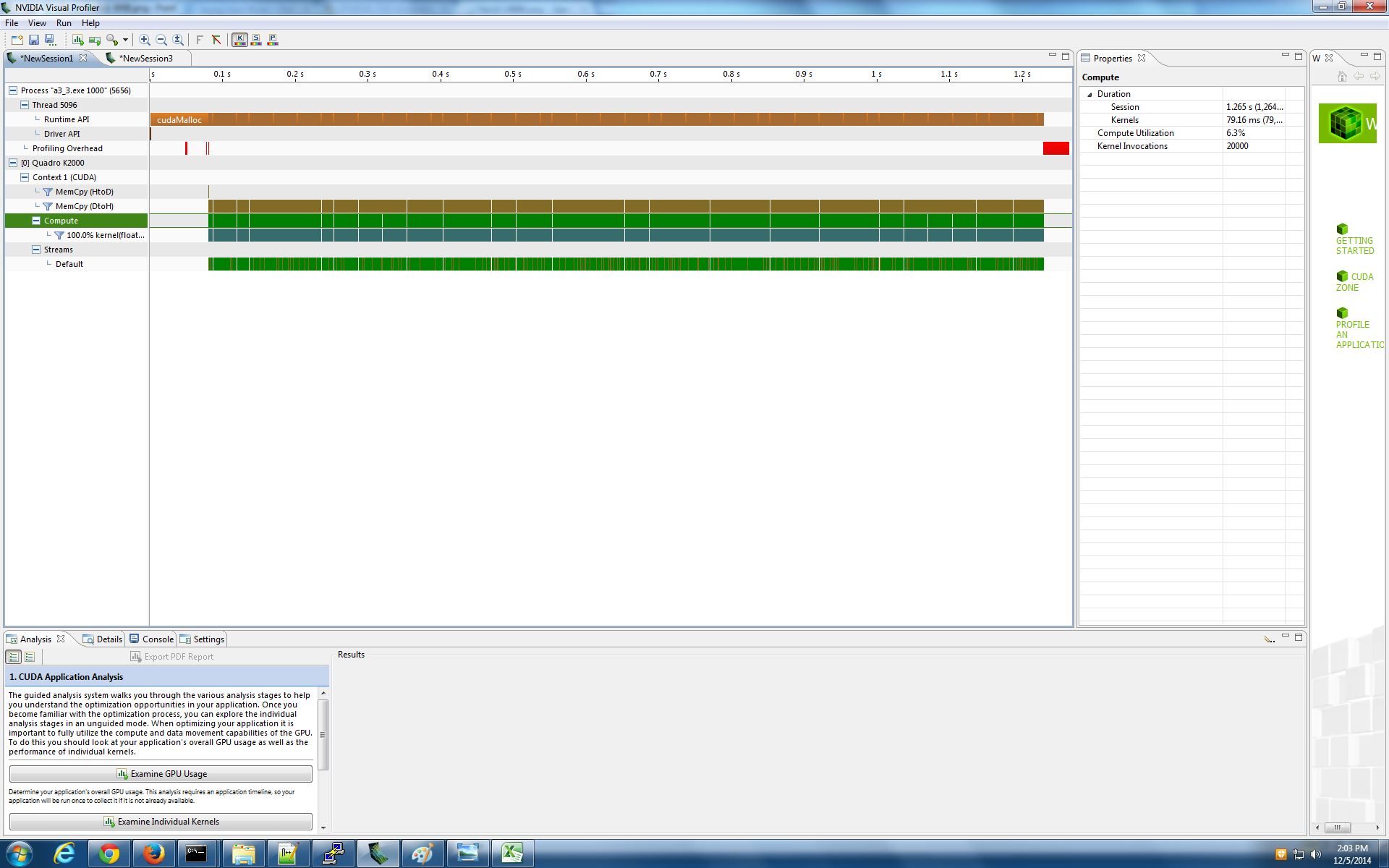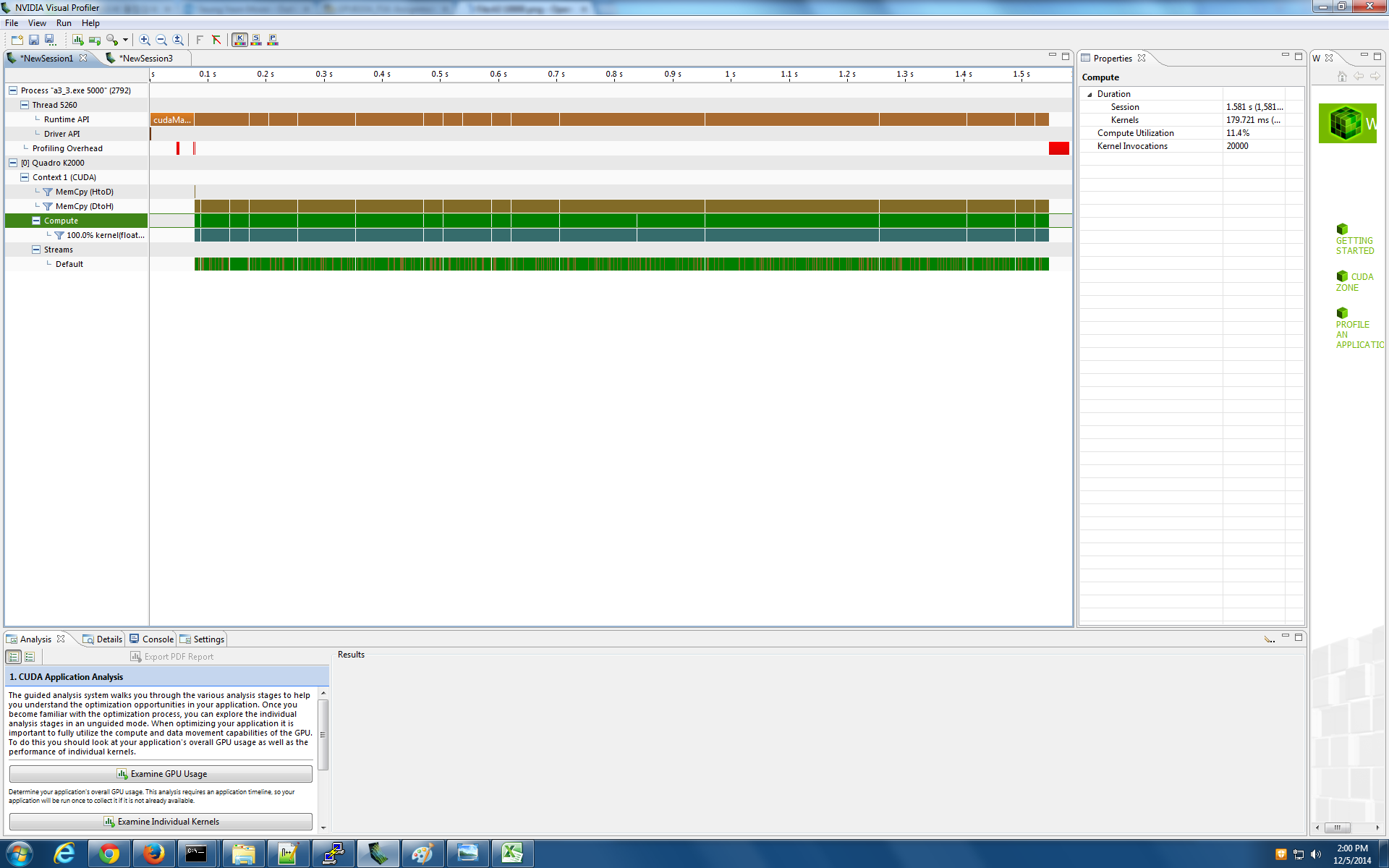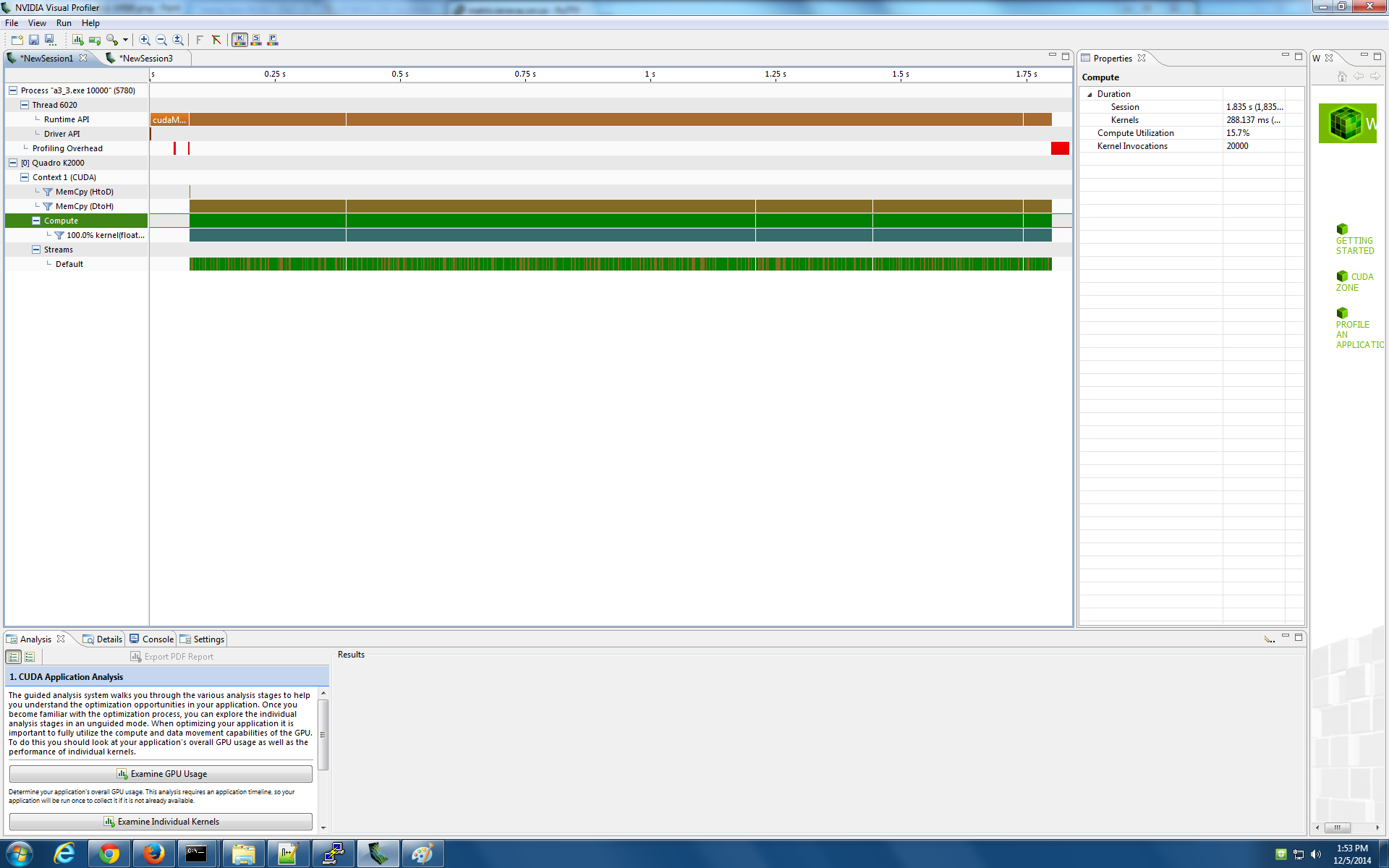GPU610/TeamKCM
GPU610/DPS915 | Student List | Group and Project Index | Student Resources | Glossary
Contents
[hide]- 1 Team KCM
- 1.1 Team Members
- 1.2 Progress
- 1.2.1 Assignment 1
- 1.2.2 Assignment 2
- 1.2.3 Assignment 3
- 1.2.4 Assignment 3 v2
Team KCM
Team Members
- Byungho Kim, Some responsibility
- Taeyang Chung, Some responsibility
- SeungYeon Moon, Some responsibility
Progress
Assignment 1
Byungho's Findings
Introduction
To enhance image quality, most of S/W use convolution algorithm with sharpen kernel. The convolution algorithm is based on pixel window and kernel multiplication and the kernel which consists of 3 x 3 matrix or 5 x 5 matrix. Therefore, as we learned at the GPU610 class, I can speed up the program using CUDA library
| Original Image | Enhanced Image |
|---|---|
These two images show the result of the S/W. Left picture is the original image and right picture is obtained by the S/W. 3x3 matrix sharpen kernel is used.
Convolution
| IP11 | IP12 | IP13 | IP14 | IP15 | IP16 |
| IP21 | IP22 | IP23 | IP24 | IP25 | IP26 |
| IP31 | IP32 | IP33 | IP34 | IP35 | IP36 |
| IP41 | IP42 | IP43 | IP44 | IP45 | IP46 |
| K0 | K1 | K2 |
| K3 | K4 | k5 |
| k6 | k7 | k8 |
The 33th output pixel will be given by
OP33 = IP22 x K0 + IP23 x K1 + IP24 x K2 + IP32 x K3 + IP33 x K4 + IP34 x K5 + IP42 x K6 + IP43 x K7 + IP44 x K8
Analysis
The profile shows that filter function occupies the most of processing time.
% cumulative self self total time seconds seconds calls ns/call ns/call name 93.59 1.46 1.46 filter(image_t*, double*, int, double, double) 6.41 1.56 0.10 5038848 19.85 19.85 put_pixel_unsafe(image_t*, unsigned int, unsigned int, unsigned char, unsigned char, unsigned char) 0.00 1.56 0.00 2 0.00 0.00 alloc_img(unsigned int, unsigned int) 0.00 1.56 0.00 1 0.00 0.00 _GLOBAL__sub_I__Z7get_ppmP8_IO_FILE 0.00 1.56 0.00 1 0.00 0.00 get_ppm(_IO_FILE*)
In the filter function, 3 x 3 mask walk through all RGB pixels and calculate convolution of them.
image filter(image im, double *K, int Ks, double divisor, double offset)
{
image oi;
unsigned int ix, iy, l;
int kx, ky;
double cp[3];
oi = alloc_img(im->width, im->height);
if ( oi != NULL ) {
for(ix=0; ix < im->width; ix++) {
for(iy=0; iy < im->height; iy++) {
cp[0] = cp[1] = cp[2] = 0.0;
for(kx=-Ks; kx <= Ks; kx++) {
for(ky=-Ks; ky <= Ks; ky++) {
for(l=0; l<3; l++)
cp[l] += (K[(kx+Ks) +
(ky+Ks)*(2*Ks+1)]/divisor) *
((double)GET_PIXEL_CHECK(im, ix+kx, iy+ky, l)) + offset;
}
}
for(l=0; l<3; l++)
cp[l] = (cp[l]>255.0) ? 255.0 : ((cp[l]<0.0) ? 0.0 : cp[l]) ;
put_pixel_unsafe(oi, ix, iy,
(color_component)cp[1],
(color_component)cp[2],
(color_component)cp[0]);
}
}
return oi;
}
return NULL;
}
Taeyang's Findings
My program is to solve the heat transfer problem using explicit method. I found this source code at http://www.pengfeidu.net/Media/pdf/1dUnsteadyHeatTransferCode.pdf
The 'Solve()' function takes 3 arguments and as t-value decreases the processing time increases as shown below

The 'Solve()' function:
void solve(){
int j=0;
while(j<tTotal/dt){
solutionNew[0]=10;
solutionNew[xGridNum]=120;
for(int k=1;k<xGridNum;k++){
solutionNew[k] = solutionLast[k]+dt*(K/dx/dx*
(solutionLast[k-1]+solutionLast[k+1]-2.*solutionLast[k]
+source(x[k],j*dt)));
}
j++;
solutionLast=solutionNew;
}
}
By Implementing parallel solution, I believe I can shorten the processing time.
SeungYeon's Findings
There are many types of image processing or operations can be done. Some of examples are rotating,re-sizing,blurring, etc... For Assignment 1, I decided to work with one of the operation that can be done with an image in c++, which deals with brightness and contrast of an image. I was able to find a open source code from "openCV" website it stands for Open Source Computer Vision, is open source libraries developed by Intel for image and video processing. The libraries can be installed in any platform, and i was able to install it in my windows platform, and all test runs all done using visual studio 2013, Test file is compiled and profiled using performance wizard vs13. Following website openCV.org is an official documentation website of openCV libraries, with code examples for many image and video type operations
The open source code for the program requires 3 user inputs which are path to an image and alpha,beta values which will be multiplied and added to each pixels' in the image. To make sure test run is accurate, i had to change some code in the program and hard code in the values for alpha and beta.
Here is two test runs using same image but in different file size
Test run with an image size of 500KB
Total Time takes is 12 seconds
Test run with an image size of 2MB
Total Time takes is 14 seconds
SeungYeons' observation for As_1
Changing contrast and brightness of an image in the function is implemented with a scale * matrix operation. M_A(x,y) = ALPHA * M_B(x,y) + BETA;
Assignment 2
For our Assignment 2 we decided to work with heat transfer problem.
To compare the speed difference between the original code and parallelized code, we first profiled the original code in matrix environment an parallelized code in school computer. (using gporf and nvvp)
Profile results
Each Program was tested with 5 different input data.(500,1000,2500,5000,10000)
Profile #1 (Original code)
Sample Data = 500
Sample Data = 2500
Sample Data = 10000
Profile #2 (GPU implementation version)
Sample Data = 500
Sample Data = 2500
Sample Data = 10000
Summary of profiling
We tested CPU and GPU implementation version with same data sizes and showed significant speedup in result after using kernel.
Summary of profiling in Chart
Charts with some of main operation(function) calls for CPU version and GPU(kernel)
Original
GPU (kernel)
Screen shot of solve function in CPU and GPU(kernel) versions
CPU
GPU(Solve) and Kernel
Assignment 3
For assignment 3, we were checking everything we can do to improve the performance and found 2 thing we can do. Firstly, in the while loop, there were 6 times of memory copy functions called, and we found that we can reduce 6 times to 1 time by using device address pointer switching. Furthermore, we found that if the sample number n is less that 1024, we can use shared memory in the kernel.
Reducing Memory Copy Calls
Assignment 2 Code
void solve(){
int j=0;
int d;
cudaDeviceProp prop;
cudaGetDevice(&d);
cudaGetDeviceProperties(&prop, d);
unsigned ntpb = prop.maxThreadsDim[0];
unsigned ntpg = ntpb * prop.maxGridSize[0];
if (xGridNum > ntpg) {
xGridNum = ntpg;
std::cout << "n reduced to " << xGridNum << std::endl;
}
double* d_x;
double* d_solutionLast;
double* d_solutionNew;
cudaMalloc((void**)&d_x, (xGridNum + 1) * sizeof(float));
cudaMalloc((void**)&d_solutionLast, xGridNum * sizeof(double));
cudaMalloc((void**)&d_solutionNew, xGridNum * sizeof(double));
while(j<tTotal/dt){
solutionNew[0]=10;
solutionNew[xGridNum]=120;
cudaMemcpy(d_x, x, (xGridNum + 1) * sizeof(float), cudaMemcpyHostToDevice);
cudaMemcpy(d_solutionLast, solutionLast, xGridNum * sizeof(double), cudaMemcpyHostToDevice);
cudaMemcpy(d_solutionNew, solutionNew, xGridNum * sizeof(double), cudaMemcpyHostToDevice);
kernel<<<(xGridNum + ntpb - 1) / ntpb, ntpb>>>(d_solutionNew, d_solutionLast, d_x, xGridNum, dt, dx, K, j);
j++;
cudaMemcpy(x, d_x, (xGridNum + 1) * sizeof(float), cudaMemcpyDeviceToHost);
cudaMemcpy(solutionLast, d_solutionLast, xGridNum * sizeof(double), cudaMemcpyDeviceToHost);
cudaMemcpy(solutionNew, d_solutionNew, xGridNum * sizeof(double), cudaMemcpyDeviceToHost);
solutionLast=solutionNew;
}
for(j = 0; j <= xGridNum; j++){
std::cout << solutionLast[j] << endl;
}
cudaFree(d_x);
cudaFree(d_solutionLast);
cudaFree(d_solutionNew);
}
Improved Code
void solve(){
int j=0;
int d;
cudaDeviceProp prop;
cudaGetDevice(&d);
cudaGetDeviceProperties(&prop, d);
unsigned ntpb = prop.maxThreadsDim[0];
unsigned ntpg = ntpb * prop.maxGridSize[0];
if (xGridNum > ntpg) {
xGridNum = ntpg;
std::cout << "n reduced to " << xGridNum << std::endl;
}
double* d_x;
double* d_solutionA;
double* d_solutionB;
cudaMalloc((void**)&d_x, (xGridNum + 1) * sizeof(float));
cudaMalloc((void**)&d_solutionA, xGridNum * sizeof(double));
cudaMalloc((void**)&d_solutionB, xGridNum * sizeof(double));
double* d_solutionTemp;
cudaMemcpy(d_x, x, (xGridNum + 1) * sizeof(float), cudaMemcpyHostToDevice);
cudaMemcpy(d_solutionA, solutionNew, xGridNum * sizeof(double), cudaMemcpyHostToDevice);
cudaMemcpy(d_solutionB, solutionLast, xGridNum * sizeof(double), cudaMemcpyHostToDevice);
std::ofstream myfile;
myfile.open ("output.txt");
// A = new, B = last
while( j < tTotal / dt){
kernel<<<(xGridNum + ntpb - 1) / ntpb, ntpb>>>(d_solutionA, d_solutionB, d_x, xGridNum, dt, dx, K, j);
j++;
cudaMemcpy(solutionNew, d_solutionA, xGridNum * sizeof(double), cudaMemcpyDeviceToHost);
/*
myfile << "Time" << tTotal/dt << std::endl;
for(int i = 0; i <= xGridNum; i++){
myfile << solutionNew[i] << ":";
}
*/
d_solutionTemp = d_solutionA;
d_solutionA = d_solutionB;
d_solutionB = d_solutionTemp;
}
myfile.close();
cudaFree(d_x);
cudaFree(d_solutionA);
cudaFree(d_solutionB);
cudaDeviceReset(); // Important
}
Assignment 2 Code
__global__ void kernel(double* solutionNew, double* solutionLast, double* x, int n, float dt, float dx, float K, int j){
int k = blockIdx.x * blockDim.x + threadIdx.x;
if( k < n){
k += 1;
solutionNew[k] = solutionLast[k]+dt*(K/dx/dx*
(solutionLast[k-1]+solutionLast[k+1]-2.*solutionLast[k]
+(x[k]*j*dt*1000))
);
}
}Improved Code
__global__ void kernel(double* solutionNew, double* solutionLast, double* x, int n, float dt, float dx, float K, int j){
int k = blockIdx.x * blockDim.x + threadIdx.x;
double *t_c;
__shared__ double s_c[1024];
if ( n < 1024 && k < (n + 1))
s_c[k] = solutionLast[k];
__syncthreads();
if( n < 1024) t_c = s_c;
else t_c = solutionLast;
if( k == 0){
solutionNew[k] = 10;
} else if( k == n){
solutionNew[k] = 120;
}
if( k < n){
k += 1;
solutionNew[k] = t_c[k]+dt*(K/dx/dx*
(t_c[k-1]+t_c[k+1]-2.*t_c[k]
+(x[k]*j*dt*1000))
);
}
}
Profile Result
Sample Data = 500
Sample Data = 1000
Sample Data = 5000
Sample Data = 10000
Chart
Assignment 3 v2
Description of v2
Changed Double precision to single precision float
Sample Date = 500
Sample Date = 1000
Sample Date = 5000
Sample Date = 10000
Char
Conclusions / Problems Encountered
Using CUDA, Our team achieved around 8000% speed up in total run time compare to original project and final result. We were certain that by implementing kernel to the original project will result in huge speed up because a calculation was done in a loop(serial) to get each heat points in specific time. To accomplish the project, first we focused on understanding the original project to find out the "hot spot" in the code and different variables and their uses. Working with heat equation problem was challenging, because we had to understand how heat points are calculated with a equation and had to find out which part/variables are needed and not to develop a kernel. The original project did not have any dependent variables given from user input, so we had to decide which part of the equation we want to be dependent. As we develop kernel and work with different resources in the program we had to decide how to work with and approach different memories in the program(accessing global memory, using shared memory..etc).One of the principle logic the program used is, to get a new heat value a last heat value is needed for calculation. So, when developing kernel our team had to figure out how many times memory copies are need and what parts can be done in GPU side(shared,register memories...) In result, we managed to minimize the number of memory copies from CPU to GPU and use more shared and register memories.

